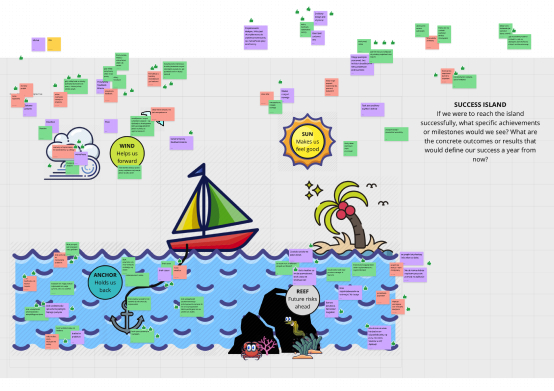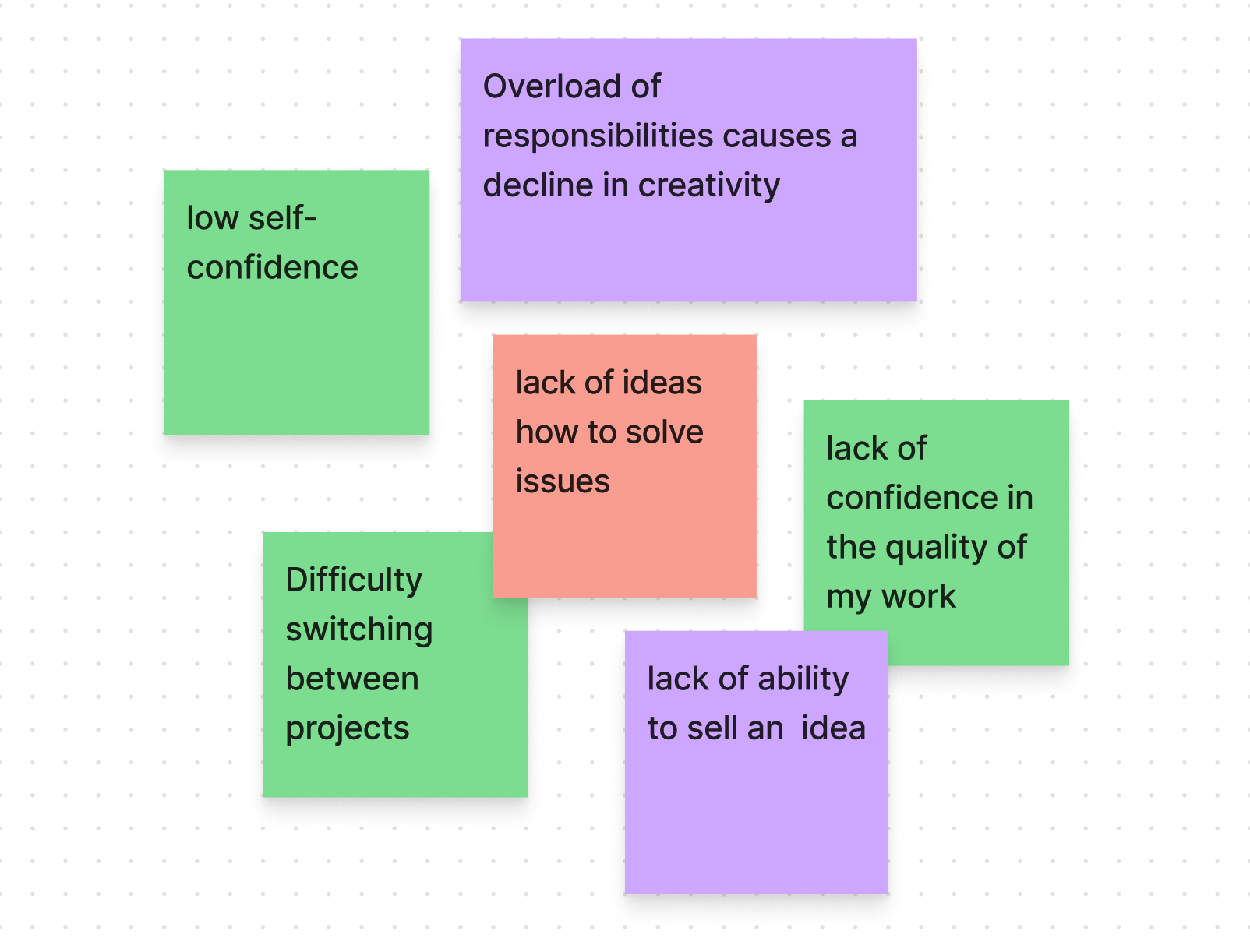
28/3/2024
Mentoring vs. Coaching in design teams
Disclaimer
Rocksoft's approach to onboarding new designers and fostering their growth.
The difference between mentoring and coaching in a professional context.
How Sailboat workshops help identify goals, obstacles, and helpful factors for team development.
The importance of adaptability and responsiveness to team needs.
How combining mentoring and coaching can effectively address different team challenges.

Last year Rocksoft onboarded a designer boasting an impressive portfolio but lacking commercial experience, alongside two individuals transitioning from graphic design to UX/UI. This created a five-person design department within our company, without a structure or a coherent development strategy.
Our initial move was to establish regular meetings or workshops, delving into various design topics. Encouraging participation from all, our primary aim was clear: to cultivate an environment where designers could confidently lead workshops, improve their confidence, and enrich their expertise.
These meetings were immensely fruitful! Both my dedication and that of my fellow designers increased. However, the initial format of our meetings had a notable shortcoming: the absence of a defined development roadmap. I sensed the topics were scattered and lacked organization. In the same time, my boss, Piotr, posed a crucial question: "Mentoring or coaching? Which approach do you think would be better?" I'll address this query within the context of project team development shortly. But first, let's grasp these concepts.
What is mentoring?
Mentoring is a long-term relationship built on trust, where an experienced individual (mentor) shares knowledge, experience, and advice with a less experienced person (mentee). It emphasizes the personal and professional growth of the mentee, guiding them towards specific goals and skill enhancement.
What is design coach?
On the other side we have coaching involves a short-term process where a coach aids the client (coachee) in defining goals, developing skills, and effecting desired changes. It often targets specific professional hurdles, with the coach employing questioning techniques to stimulate the problem-solving abilities and change behavior.
The crucial difference between mentoring and coaching lies in the relationship's nature: mentoring hinges on guidance and experience-sharing, while coaching centers on empowering the client to independently resolve issues and attain objectives. Mentoring tends to be more enduring and relational, while coaching may lean towards short-term goals and behavioral shifts.
After immersing myself in these methodologies and their potentials, I asked myself: “Do I even need to decide?” To get my answer I decided to gather insights firsthand from our designers. Additionally, I wanted to identify our focus areas. How could I address numerous inquiries concurrently?
Sailboat method
Sailboat workshops, an interactive strategy used in project management, team development, or strategy planning, depict a metaphorical image where the ship symbolizes the goal, the sails denote factors conducive to achievement, the anchor signifies obstacles, and the wind represents external factors.
During these workshops, we collectively pinpointed four areas, then through voting, prioritized the most crucial and relevant areas for enhancement in our current scenario.

Goals
Helps us to define north star for professional growth. At the very beggining of workshops we set up our goals.

Obstacles
Everything that make task accomplish harder

Helpful factors

Insights
As evident, we swiftly identified developmental areas, significantly aiding in selecting and charting topics for forthcoming meetings/workshops. Crucially, these workshops and intensified collaboration with designers allowed us to tailor topics for independent development, catering to each designer's areas of improvement and preempting impending work challenges.
Upon analyzing the workshops, it dawned on me that a single method wouldn't suffice. The solution naturally emerged: IT DEPENDS. Let's delve into the following insights:

For these issues mentoring sounds like a answer. Let’s take a look for feedback below:
This information suggest that coaching occurs be sutable for our team too.

It depends - sounds familiar?
Research, workshops, and dialogues with designers reaffirmed my stance: the optimal approach depends on situational context. Just as with product or project development, flexibility and responsiveness to users' current needs gives optimal outcomes. Similarly, in nurturing a UX team/guild's development, adaptability is key, guiding our next steps depending on all factors.
Answer to the question of which of the discussed methods to choose, in my opinion, involves understanding that one needs to be responsive to the current situation in the team and address the team's needs on an ongoing basis.




.svg)



.png)

















